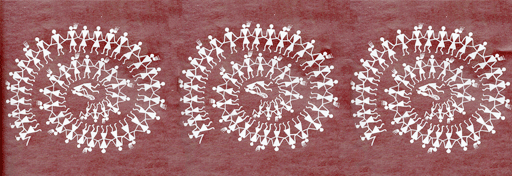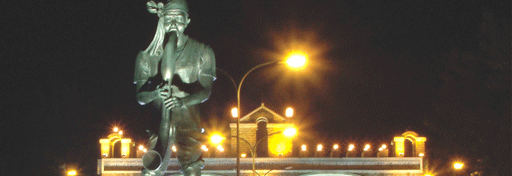History of Dadra & Nagar Haveli
Dadra & Nagar Haveli. Endowed with nature's munificence, it's a land of spell-binding beauty... green forests, winding rivers, unimaginable waterfronts, gentle gurgle of streams, distant dotting mountain ranges, a gorgeous kaleidoscope of flora and fauna... Owing to its serenity and quaint sylvan surroundings, this territory is a heaven for those who hunt around for a tranquil holiday.

In order to keep the English at bay and to enlist their support against the Mughals, the Marathas made friends with the Portuguese and signed a treaty in 1779. According to this historic treaty of friendship, the Maratha-Peshwa agreed that the Portuguese will be allowed to collect revenue from Dadra and Nagar Haveli which consisted of 72 villages, then known as parganas in compensation for their loss of a warship called 'Santana' which had earlier been captured by the Marathas but not surrendered to the Portuguese inspite of their many entreaties. These territories were earlier ruled by the Koli chiefs who were defeated by the Hindu kings of Jawhar and Ramnagar. The Marathas conquered and annexed these territories to their kingdom.
The area of Dadra & Nagar Haveli spread over 491.00 sq.kms. land locked between Gujarat in North and Maharashtra in South was liberated from Portuguese Rulers by people themselves on 2nd August 1954. The people of the U.T. established free Administration of Dadra & Nagar Haveli, which was finally merged in to Union of India in the year 1961.
Land, People & Culture

The U.T. of Dadra & Nagar Haveli is located on the western side of the foot hills of western Ghat and has undulating terrain 40% of the total geographical area is covered with forests and thus offers it a look of woodland. The major river Damanganga and its tributaries criss-cross the U.T. and drain into Arabian Sea at Daman. The U.T. has population of 2.20 lakhs as per the 2001 census which has predominance of tribals forming a major chunk of 62% of the total population.
The major tribes are Varlies, Kokana, Dhodia and Dublas. The tribals have their distinct culture of their own consisting of curious rituals and colorful folk-lore. No occasion in tribal life is complete, be it a marriage or harvest without a folk dance. The major dances are Tarpa, Dhol, Bhavada and Gherria. The performers of these foot-tapping dances are equally good in other arts and art forms and are almost independent for most of their daily requirements.
Salient Features

As per census 2001, the tribals constitute 62.24 % of the total population of the territory. the main tribes are Dhodia, Kokna and Varli with small groups of Koli, Kathodi, Naika and dubla scattered over the territory. The Dhodias and Dublas are mainly confined to the Northern part of the territory whereas the Koknas and Varlis and found all over. From the total population of Tribals, the Varlis consitute 62.94% and the Koknas and Dhodias comprise 16.85 and 16.90% respectively of the tribal population., 2.29% Dublas, 0.08% Kathodis, 0.84% Kolghas and 0.08% Nayakas being the smallest groups represents 3.31% of the population together situated between the foothills of Western Ghats on one side, and the Arabian Sea on the other, this land of colorful tribals is known as Dadra & Nagar Haveli.
This area of 491 sq.kms. is the home land of nearly one lakh people of various tribes. It has seen many rulers, ranging from the mighty Marathas to the fiery Portuguese. Yet, the essence of tribal life, its richness and variety, its art, myth, song and folklore, have all remained unchanged.






